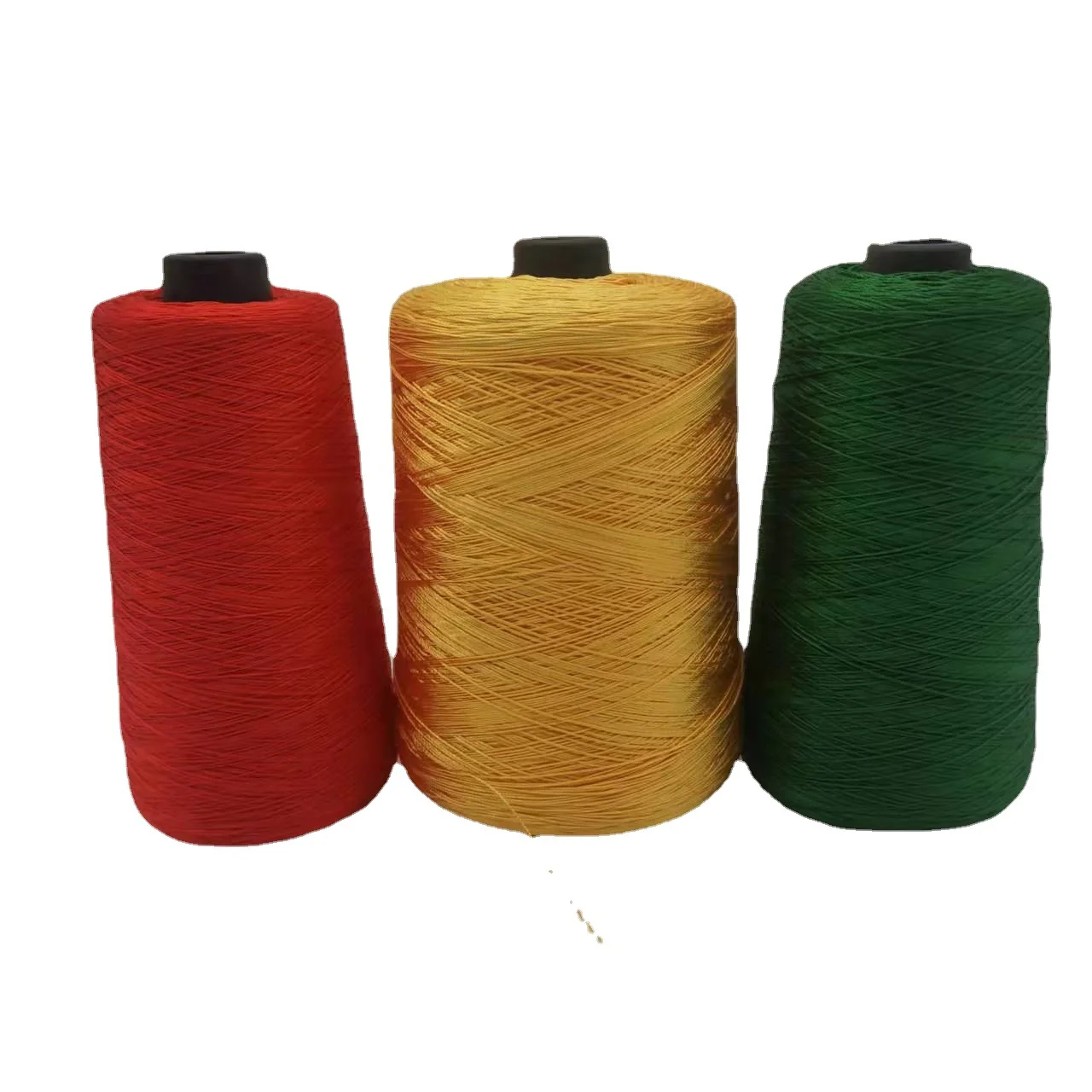Polyester filament yarn, a remarkable synthetic fiber, has become an integral part of various industries due to its unique properties and diverse applications.
Polyester filament yarn

Hangzhou Futureyarn Textile Co.,Ltd. is a polyester filament yarn factory. Polyester filament yarn is made from polyethylene terephthalate (PET), a polymer that offers excellent mechanical and physical properties. This synthetic fiber has gained significant popularity in the textile, industrial, and other sectors for several reasons.
The classification of polyester filament yarn is an important aspect to understand. Pre-oriented yarn (POY) is one of the primary types. POY is produced by a process that partially orients the molecular structure of the polymer, resulting in a yarn with certain characteristics. It is often used as an intermediate product in further processing to obtain other types of yarn.
Full drawn yarn (FDY) is another classification. FDY is characterized by its high tensile strength and uniformity. It is produced by a continuous drawing process that aligns the polymer molecules more precisely, giving the yarn enhanced mechanical properties. This makes FDY suitable for applications where strength and durability are crucial, such as in the manufacturing of fabrics for apparel and technical textiles.
Stretch deformed yarn (DTY) is a third important type. DTY is created by subjecting the yarn to a stretching and texturing process. This imparts elasticity and a crimped or textured appearance to the yarn. DTY is widely used in the production of fabrics with a soft hand feel and good drapability, such as in the fashion industry for creating clothing with desirable aesthetic and comfort qualities.
The properties of polyester filament yarn contribute to its widespread use. It has excellent tensile strength, which allows it to withstand mechanical stresses and abrasion. This makes it suitable for applications where durability is essential, such as in upholstery and industrial fabrics. Polyester also has good resistance to chemicals, including acids and alkalis, which enhances its suitability for various environments.
In addition to its strength and chemical resistance, polyester filament yarn has good dimensional stability. It does not shrink or distort significantly when exposed to heat or moisture, ensuring the integrity of the final product. This property is particularly important in applications where precise sizing and shape retention are required.
The colorfastness of polyester filament yarn is also notable. It can be dyed easily to achieve a wide range of colors with good color retention even after repeated washing or exposure to sunlight. This makes it a preferred choice for colorful and vibrant textile products.
Polyester filament yarn finds extensive applications in various industries. In the textile sector, it is used to manufacture a wide variety of fabrics, including apparel fabrics, home textiles, and technical textiles. The different types of polyester filament yarn offer different properties that can be tailored to meet the specific requirements of different fabric applications.
For example, FDY is often used in the production of high-performance sportswear fabrics due to its strength and durability. DTY is preferred for creating fabrics with a soft and supple texture for fashion clothing. POY is commonly used as a base for further processing to obtain other specialized yarns.
In the industrial sector, polyester filament yarn is used in applications such as ropes, cables, and filtration materials. Its high tensile strength and resistance to abrasion make it suitable for these demanding applications.
The manufacturing process of polyester filament yarn involves several steps. The raw materials, typically PET pellets, are melted and extruded through spinnerets to form continuous filaments. These filaments are then cooled and solidified. Depending on the type of yarn being produced, further processing steps such as drawing, texturing, or heat treatment may be applied to impart the desired properties.
The quality control of polyester filament yarn is crucial to ensure consistent performance and quality. Various tests are conducted throughout the manufacturing process to monitor parameters such as filament diameter, tensile strength, and elongation. This helps in identifying and addressing any potential issues early on to maintain high-quality output.
https://www.futureyarn.com
Hangzhou Futureyarn Textile Co.,Ltd.

